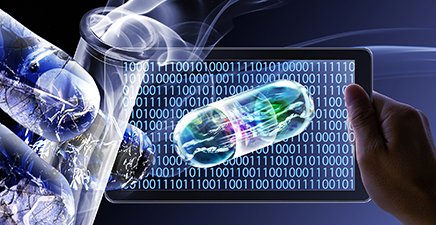
An artificial intelligence robot experiments and studies in a test tube. Development and research of new drugs
AI will not replace doctors and should
be considered as just another clinical tool to help achieve more accurate
diagnoses
Have you noticed the increased frequency with which AI appears in your social media feeds and even journal content pages?
The concept of AI was developed in the 1950s and has been
defined as “the use of a computer to model intelligent behaviour with minimal
human intervention”. It is an alternative to human intelligence, and has been
touted as a replacement for the diagnostic skill of physicians. For several
years, the scientific literature and lay media have suggested that nonhuman
intelligence could equal or even exceed human intelligence in diagnostic tasks.
AI, as is often the case with new ideas, is now presented
as THE future of medical practice. To which my response is a
clear, ‘ah here now, steady on’ (with a hat tip to the late broadcaster, Marian
Finucane).
What is the difference between human and artificial
intelligence? Human intelligence is what doctors use when they undertake
clinical reasoning, which has been defined as “the internal mental processes
that a physician uses when approaching clinical situations”.
This central
component of physicians’ competence is how we make diagnoses. Artificial intelligence, on the other hand,
refers to several different methods. Most AI diagnostics are based on machine
learning algorithms that are “intelligent” enough to handle difficult and
complex problems; however, algorithms rely on human intelligence for their
creation. A lot of recent progress in the field has been made through the
resurgence of neural networks – a family of methods of machine learning.
A recent paper in the Canadian Medical
Association Journal (CMAJ) analysed differences in the ways humans and AI approach
diagnostic reasoning, with the authors concluding (thankfully) that human reasoning
will not become obsolete in medical diagnosis.
“A physician solves most clinical problems in an
intuitive and deductive way, whereas AI problem-solving depends on access to
and analytical and inductive processing of large quantities of data that relate
to the case,” according to the paper.
The principles underlying learning are similar for human
and artificial intelligences, but the respective approaches to diagnosis are
markedly different, they conclude.
After generating diagnostic hypotheses early, doctors and
med students spend most of their diagnostic time testing them by collecting
more data. This approach is underpinned by cognitive processes that can be
either intuitive or analytical. Intuition – sometimes referred to as “pattern
recognition” – is a process that works automatically and subconsciously. It
allows humans to generate diagnostic hypotheses early by taking a few pieces of
information, associating them and comparing the result with patterns stored in
long-term memory.
Machine learning, on the other hand, depends on the
development of an algorithm that “learns” important features from a data set
known as a “training set” to then make predictions about other unknown data. AI
is limited to the specific information provided for a specific task.
Furthermore, for every new task, AI systems must usually start from scratch.
The rate of diagnostic errors in medical practice is
estimated at about 5-15 per cent, depending on the specialty. For AI to gain
traction this will be a key metric. Some of the initial research, in targeted
situations, is encouraging. For example, an AI algorithm trained on a data set
of more than 100,000 images was better than specialist radiologists at
detecting pneumonia using chest x-rays.
Some of the responses to the paper were lively: “AI is an
emerging technology that is generating more fear and enthusiasm than is
required. Just like historical revolutions, like the wheel, steam engine,
printing press, computers, internet, it is just another tool in the great human
journey… AI is a tool that will do what we will tell it to do. Teaching
ethics to AI will be our biggest challenge,” was typical.
So, much to my relief, the paper’s conclusion is that the
wholesale replacement of human intelligence by AI in diagnostic tasks is
unlikely, apart from some highly targeted tasks; instead, AI should be
considered as just another tool to help clinicians in their reasoning.
That AI is able to
learn on its own and will replace physicians is a myth that we in the medical
profession must challenge.





Leave a Reply
You must be logged in to post a comment.